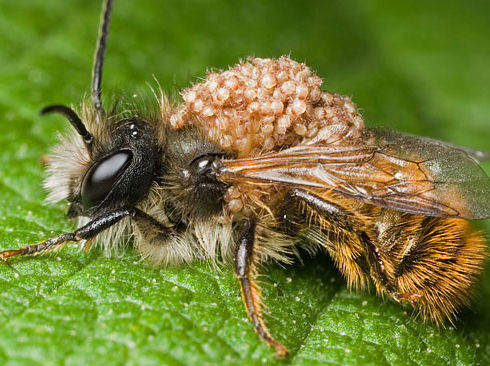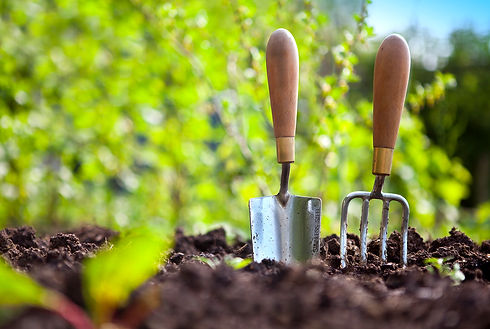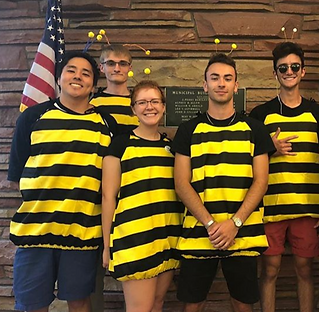ABOUT BEES
Everything you need to know about bees and the current issues they face.
THE WIDE WORLD OF BEES
While the first - and sometimes only - bee species that many people think of is the honeybee, the truth is that there are over 20,000 species of bees in the world, 4,000 of which are native to North America alone. From Bumblebees to Carpenter Bees to Mason Bees to Squash Bees, the variation of bee species is vast and fascinating.
In truth, no two bee species are at all alike. While some species are social and live in large hives (like the honeybee), others are solitary and live in burrows in the ground or hallowed-out logs. While some species sting in order to protect themselves, others may not sting at all. We invite you to explore the wide world of bees and determine which species is your favorite.


A RELATIONSHIP LIKE NO OTHER
Bees and humans have been closely connected since the beginning of civilization. From the creation story of the Kalahari Desert’s San people to the coinage of the Greek Empire, bees have played a major part in the lives of mankind.
Today, it’s not uncommon to know a family member that keeps bees, a close friend that’s researched this fascinating insect, or to buy goods from a business that produces goods with the gifts like honey and beeswax that bees bestow upon us. Truthfully, bees continue to become a more important part of our lives, and this trend shows no sign of slowing down.
BEES AND POLLINATION
As pollinators, bees play an enormous role in the reproduction of flowering plants. From sunflowers to asters and black-eyed susans to mexican-hats, a large majority of the plants in the gardens that brighten our lives with their beauty rely on bees in order to reproduce.
This extends to the plants that we rely on to provide us with food. In fact, 1/3 of every meal that you eat was made by possible by the work of these busy pollinators. While it’s easy to guess some of the foods that are dependent on bees - such as apples, oranges, tomatoes, or cucumbers - others - such as almonds, coffee, and garlic - aren’t as obvious.
So, the next time you stop to enjoy raindrops on roses or a warm meal with family and friends, make sure to say a quick thank you to the bees!

So, what's the problem?
Imagine a grey world without almonds, apples or fragrant flowers…
Sounds terrible, right?
Unfortunately, that’s the shocking future we face if we don’t work to help our most precious pollinator: bees.
Far from being a niche concern, bees is at the heart of our survival. One in three bites of food we eat depends entirely on bees – and they have been dying at unprecedented rates. Their hard work is not only essential to healthy ecosystems, but to sustaining animal and human life too.

THE UNFORTUNATE TRUTH
The unfortunate fact is that bees are in danger. Many U.S. beekeepers are experiencing losses of 40 to 50 percent or more over the winter, substantially more than is considered normal or sustainable. Of the over 4,000 species of native bees, more than half are declining in population. And in 2017, the United States listed a species of bumble bee as endangered for the first time.
With how important bees are to the lives of human beings, there’s no doubt that this is beyond alarming. So what could be at the cause of all of this trouble? While there are many factors that play a part, the three major causes for declines in bee populations are pesticides, mites and diseases, and loss of habitat.
PESTICIDES & DISEASE
While no one investigating declining bee populations is suggesting that pesticides are the sole cause of the issue, no single pathogen or parasite, appears to sufficiently explain the current rate of hive collapse. Some studies have indicated that neonicotinoids - a widely used type of pesticide - can lead to a sharp decline in queen bees in colonies and can also interfere with the ability of bees to navigate back to their hives. Other research shows that pesticides may suppress the immune system of bees, thus allowing mites and pathogens an easier way to attack their host.
Varroa mites are external parasites that attack both honey bees and brood. They suck the blood from both the adults and developing brood, especially drone brood. This weakens and shortens the bee’s life. While varroa mites have been known about since the 1980’s, they are still a major cause for the collapse of many beehives.
When a varroa mite attacks a bee, it weakens the immune system of the bee and make it susceptible to a number of diseases. Some of these diseases are bacterial, like American and European Fouldbrood, while others are viral, like the cloudy wing virus or the sacbrood virus.


LOSS OF HABITAT
As humans have continued to build more and more highways, office spaces, houses, strip malls, and industrial parks, we’ve also removed and/or fragmented more and more bee habitat. The removal of bee habitat means that we are replacing land that used to have forage for bees with structures that have no forage at all, and the fragmentation of bee habitat means that we are increasing the distance bees must travel to get to one source of food from another.
Furthermore, changing temperature and weather conditions due to climate change have restricted the area where bees can survive, and the pollinators have struggled to adapt. A number of bee species are experiencing a diminishing range in which they can travel to find shelter and/or food.
How do we fix this?
Luckily, there are many ways for you to help.
Sounds terrible, right?
Unfortunately, that’s the shocking future we face if we don’t work to help our most precious pollinator: bees.
Far from being a niche concern, bees is at the heart of our survival. One in three bites of food we eat depends entirely on bees – and they have been dying at unprecedented rates. Their hard work is not only essential to healthy ecosystems, but to sustaining animal and human life too.
UNDERSTANDING THEIR IMPORTANCE
Once one realizes the importance of bees to human lifestyles and comes to understand that honey bees and native bees alike are in grave danger, the next thought is most likely, “So what can I do?”
Thankfully, getting involved to help support bees isn’t hard at all! There are a number of easy steps you can take to start supporting the bee populations of your local community


A RELATIONSHIP LIKE NO OTHER
Native plants are those that occur naturally in a region in which they evolved. They are the ecological basis upon which life depends, including bees and other pollinators. Without them, the native bees that evolved along with them cannot thrive.
Landscaping choices have meaningful effects on the populations of bees to a local community. The bottom line is this—homeowners and landscapers can benefit bees by simply selecting native plants when making their landscaping decisions.
The best part is that native plants are often less expensive and require less water than non-native plants, are easy to find in local plant nurseries, and still look downright gorgeous in your garden.
SAY NO TO PESTICIDES AND CHEMICALS!
Pesticides, weedkillers, and other chemicals may help to make your lawn and gardens look pretty, but current research suggests that they could be detrimental to both honeybee and native bee populations. Specifically, avoid neonicotinoids, a variety of pesticides that many scientists believe could be partially responsible for colony collapse disorder.
Your lawn and gardens actually don’t need pesticides or other chemicals to look gorgeous, either. By planting native plants that are used to local bugs and weeds and putting in a little research to find gardening tips and tricks, you can still have the best looking yard on the block and know that you’re supporting bee populations.

GET INVOLVED!
Get involved in supporting bees in your local community!
There are multitudes of organizations passionate about promoting the success of bees, and taking a part in their activities and events is a great way to make friends and make a difference.
You don’t have to be involved in environmental design or environmental studies to get involved, either! Bees impact of the lives of every single one of us, so it stands that every single one of us can dedicate time to supporting them!
If you’re a CU student of any kind, we would love to have you as a member of our club! Learn more about how you can join us and start having fun while making a difference.

